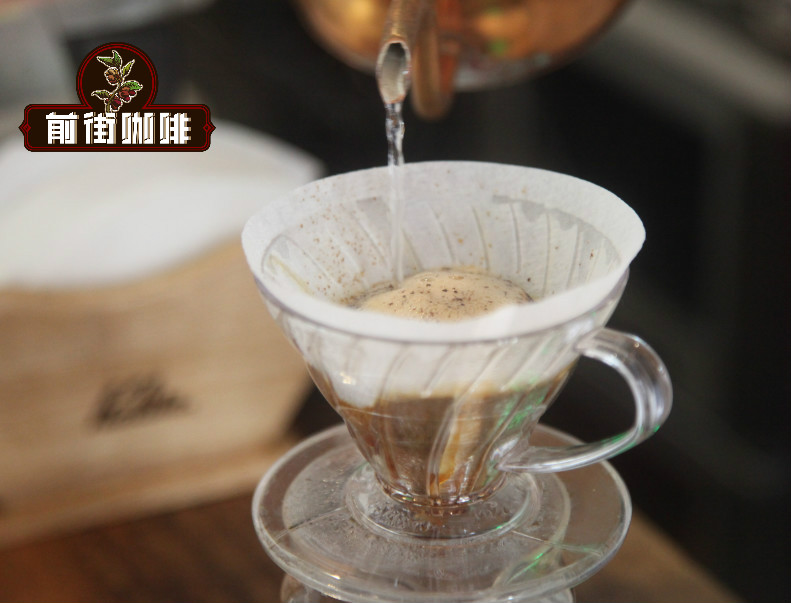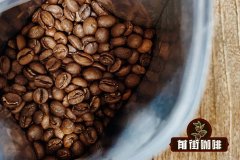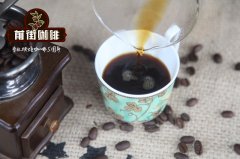The significance of coffee cup test factors affecting coffee cup test coffee cup test process steps
During the cup test, if the extraction rate of each cup of coffee on the table is different, then does it make sense for us to write cup test notes?
The cup test is an essential evaluation tool for anyone who wants to buy, sell or bake coffee. It can be used to compare batch differences, identify flavor outlines, identify defects in raw beans and baking, and assist you in trading based on production area and baking degree.

Why is cup test consistency important?
No matter what career you are in, accurate and consistent information when making decisions will be the key to assisting you in making decisions. The mineral composition of water and its temperature, the number of fine powders and large particles produced during coffee grinding, changes in baking methods, and even local temperature and temperature may affect the accuracy of cup measurements, which will expose you to unreliable data. What we want to do is to be able to analyze or evaluate the coffee itself, and to do this, we must first standardize all the factors in the brewing process to ensure that when we brew, taste, or compare samples of coffee, the only difference between them is the difference in the coffee bean itself.
Variable 1: water quality
The mineral composition in the water and the softness and hardness of the water affect not only the taste of the water, but also the extraction rate of coffee. Therefore, unless the water quality is controlled, coffee will be tested in different regions. The results will have different fractions and flavor profiles.
According to the cup testing guidelines of the boutique coffee association SCA, the cup test water must be dry and tasteless, not distilled water or soft water. The ideal water quality for cup test should be between TDS 125 and 175ppm.
You should know the quality of the water used in your cup. In order to ensure that the quality of the water used in the cup test is the same, you must use water quality testing accessories and test the water of the same source. If the test meets the standard, it should be used throughout the cup test process. Sometimes bean bakers bring their own cup measuring kits, including refractors and machines that measure TDS. But don't forget that even water from the same source can change its quality. it is recommended that if you want to use it as a cup test, at least test your water every week.
Variable factor 2: water temperature
According to SCA, the temperature of coffee powder when it comes into contact with water should be 93 °C, but it is tricky to control it.
It is very important to use accurate and stable heating appliances. Another factor affecting the water temperature is that the hot water temperature will be lost due to contact with the air. It is suggested that the action of injecting hot water into the cup should be as fast as possible to reduce the time gap between each cup.
Accuracy is also very important, although the difference here is only a few seconds, or the temperature difference of half a degree, it may not sound like much, but it will affect the extraction of coffee. The key is to ensure that the samples on the table are consistent and that the analysis of each sample focuses only on the coffee itself, not on the difference in brewing water temperature.
Variable factor 3: baking
If the purpose of your cup test is to find out the flavor potential of raw coffee beans, not the potential flavor characteristics brought about by roasting, then it is important to minimize the differences caused by coffee roasting or exhaust. The bean baker should be aware of the protocols developed by SCA for sample baking, including baking degree, rest time, sample storage conditions, etc.
Variable factor 4: grinding thickness
Grinding thickness is probably the trickiest part of complying with International Cup standards because it is more difficult to standardize.
Although the machine can heat hot water to a precise temperature, and you can measure the baking degree on a variety of instruments, it is more difficult to measure the grinding thickness, and the most important thing is to obtain the correct grinding thickness. and the production of fine powder and large particles may be limited. Pay attention to the grinding quality of the bean grinder and use tools such as sieves to ensure consistency.
The SCA agreement of the boutique coffee association states that coffee samples should be weighed in the form of raw beans and soaked in water within 15 minutes after grinding, the grinding thickness should be slightly thicker than that used in hand-brewed coffee, and 70-75% of the particles should be sifted using a US standard size 20 sieve. SCA recommends preparing at least five cups of samples for each type of coffee to ensure consistency between samples.
It should also be noted here that if the bean grinder noodles have residual powder left by previous grinding, it is possible to cause sample contamination during grinding. SCA recommends that before grinding the sample, a small amount of sample beans should be ground and discarded, which means that even the residual powder will be the same kind of coffee.
Variable factor 5: Cup test program
The reproducibility of cup testing is as important as consistency, and the rigorous cup testing process helps to improve the replicability of each cup test. If you fill the cup with water halfway through the test, the phone rings and the water cools with the coffee for three minutes, and then you come back from the phone and continue to pour water, then many cups of coffee have already been extracted, so there will be some samples that are overextracted or underextracted during the cup test.
Even small variables can affect the reproducibility of cup testing, and the following key points must be followed during cup testing:
1. When breaking the residue, do not be so violent that stirring may affect the extraction
2. when fishing for dregs, try not to stir the coffee with a spoon, so that the disturbance will affect the coffee.
3. When sipping each cup of coffee, wash the spoon with dry water to reduce the influence of different coffee samples on each other.
4. try not to talk during the cup test, so as not to affect the flavor of other people's drinks and distract attention.
Variable cause 6: cup tester
A well-trained team is also one of the keys to the standardization of cup testing process, and experienced testers can work with the team to accept taste correction, making the communication of cup testing and the consistency of lower scores more efficient.
However, cup testers are also the most difficult factors to control. Differences in cultural background can lead to differences in the perception of food and flavor of the cup tester team. In order to solve this problem, some competitions such as the Cup Test of the Excellence Cup must meet certain requirements. The cup tester must not only have many years of cup testing experience, but also need to carry out cup testing regularly, in addition, several rounds of taste correction should be carried out for each cup testing activity.
For producers and bean bakers, it is worth training teams together, such as tasting fruits, spices and other foods that are often used as a reference. This is important if you have teams in different countries or regions. If you use fruits such as dragon fruit and grapefruit to describe flavor in the Asian Cup, familiarity with the taste of these fruits may enhance the awareness of European team members. You can also refer to the situation at the time of correction, such as comparing how cup testers describe the flavor of the same coffee sample.
Important Notice :
前街咖啡 FrontStreet Coffee has moved to new addredd:
FrontStreet Coffee Address: 315,Donghua East Road,GuangZhou
Tel:020 38364473
- Prev

Characteristics and baking rules of Nordic roasted coffee beans the flavor of Nordic roasted coffee beans
What is Nordic baking? Nordic baking has been developed since 2000, by the Kaffa Bakery in Norway. Kaffa calls this practice "Nordic Style". Also because of Nordic's lack of privacy about skills and the willingness of the coffee industry to share, with the flow of coffee talent, Nordic Style baking methods spread throughout the five Nordic countries in less than five years. Experience digital baking
- Next

History of coffee development in the world| What are the characteristics of coffee shops around the world? Where is the authentic coffee?
It's hard to imagine a world without coffee. And you think it's right. Coffee has been around for thousands of years. Who discovered coffee and how coffee is brewed is largely unknown, but what is known is that the atmosphere of the coffee house has not changed much since its inception. The history of the First Cafe dates back to 1475. he
Related
- Beginners will see the "Coffee pull flower" guide!
- What is the difference between ice blog purified milk and ordinary milk coffee?
- Why is the Philippines the largest producer of crops in Liberia?
- For coffee extraction, should the fine powder be retained?
- How does extracted espresso fill pressed powder? How much strength does it take to press the powder?
- How to make jasmine cold extract coffee? Is the jasmine + latte good?
- Will this little toy really make the coffee taste better? How does Lily Drip affect coffee extraction?
- Will the action of slapping the filter cup also affect coffee extraction?
- What's the difference between powder-to-water ratio and powder-to-liquid ratio?
- What is the Ethiopian local species? What does it have to do with Heirloom native species?

